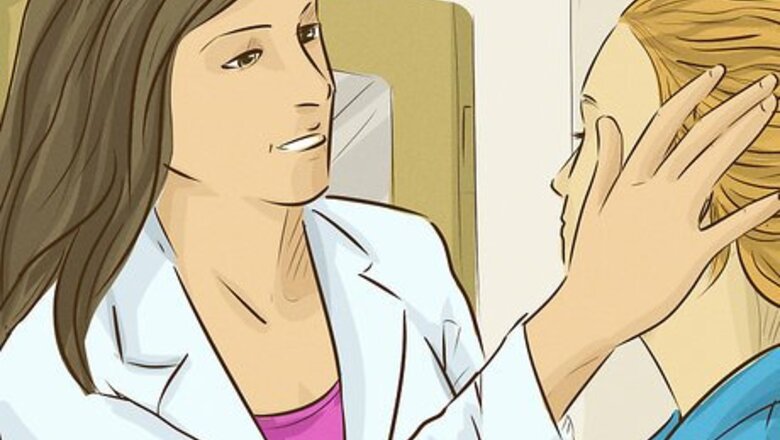
views
X
Research source
Treating Stray Eyelashes
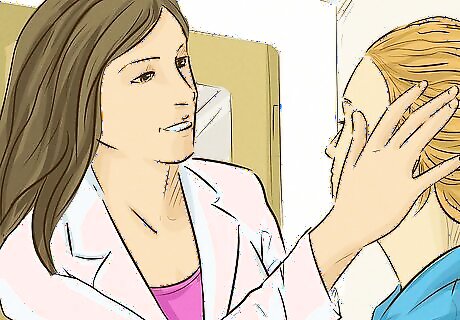
Visit your ophthalmologist. Your ophthalmologist will perform an eye exam to get a better look at the troublesome eyelashes. They will also be able to perform tests to check for any scratching of the outer layer of your eye, the cornea. Tell the doctor how long the eyelash problem has been going on and any other symptoms you’ve been having, if applicable.
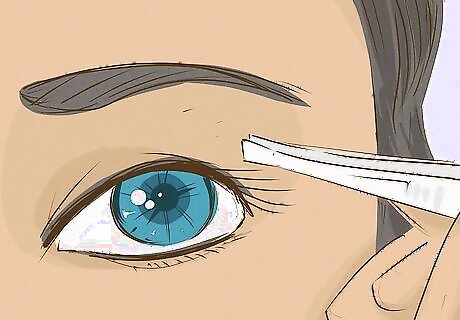
Have the problem eyelashes removed with forceps. For any individual lashes that are scratching your eye with no other apparent problems, your doctor will use a pair of forceps to pluck out the lashes that are hurting you. Do your best to relax and hold still during the procedure. It can help to take a few deep breaths. Because your eyes are so sensitive and important, it’s really best to have any problem eyelashes removed by the doctor rather than trying to tweeze them yourself at home. You could accidentally scratch your eyes and damage your sight.
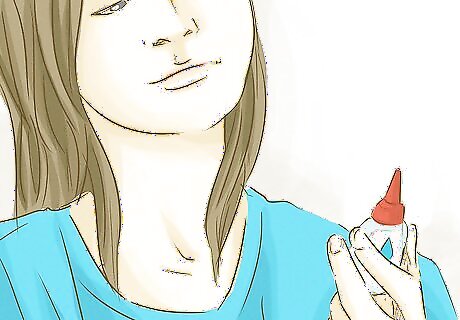
Follow the doctor’s directions for aftercare. Depending upon any corneal scratching or other issues that were discovered during the exam, your doctor may prescribe you antibiotic eye drops after removing the problem lashes. Follow the doctor’s instructions, especially about scheduling any follow up appointments. There may be no special directions or healing at all, if your problem was mild.
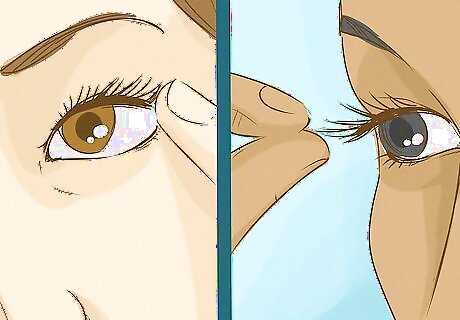
Look for any recurrences of the problem. While some eyelashes that poke your eye are flukes and grow back in properly, others will grow back towards the eye again. Keep an eye out for any lashes that grow in the wrong way. You will need to have them addressed in a more permanent way so they are not a constant irritant.

Visit your ophthalmologist to have recurrences addressed. Repeated scratching of your eye by your eyelashes can cause serious damage. There are treatments to remove problem eyelashes permanently so your eyes remain healthy with clear sight.
Preventing Eyelashes from Poking Your Eye
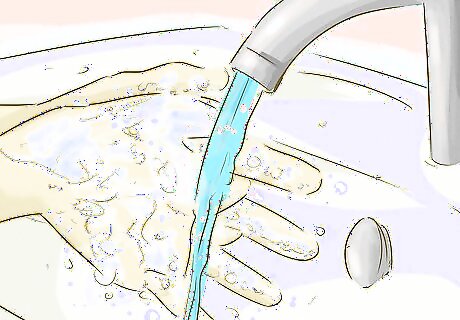
Clean your hands before handling contact lenses. Sometimes bacterial infections can cause eyelashes to grow the wrong way. To keep your eyes as healthy as possible, wash your hands before putting your contact lenses in or taking them out. This will help prevent infection.<>
Brush your eyelashes each day. Use a clean, disposable lash spoolie to comb through your lashes when you wake up and after you shower or bathe. This will help direct extra-long lashes into place so they won't poke you in the eye.
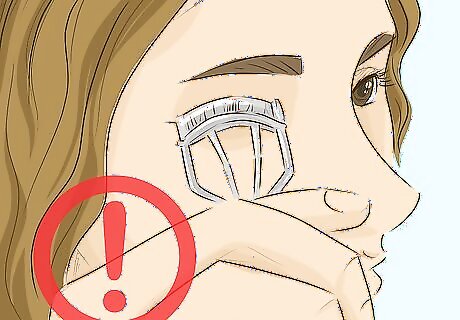
Minimize your use of eyelash curlers. If you clamp your eyelashes into an eyelash curler improperly, it is easy to curl your eyelashes the wrong way towards the eye. If you have problems with your eyelashes growing the wrong way already, it’s probably best to avoid devices like this, as they can worsen the problem.
Clean your makeup brushes regularly. Avoid sharing mascara, and clean your makeup brushes with mild soap and water at least once a week. The brushes can air dry. Dirty brushes can cause eye infections, which may make your eyelashes grow towards the eye rather than away from it. Remove your makeup completely using soap and water or a makeup cleaning cloth before going to bed each night.
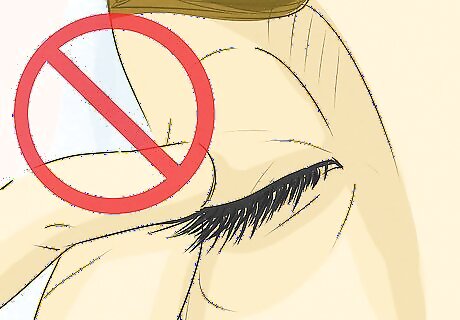
Avoid false lashes. False eyelashes are typically adhered to your eyelid with tacky glues. Many glues contain formaldehyde and can cause allergic reactions and atypical lash growth due to the weight and stickiness of the glue. If you have trouble with your lashes growing in improperly, take a break from false lashes for a while.

Ask your family about their eye health history. Sometimes, trichiasis can be hereditary. Knowing more about your family’s eye history can alert you to any chronic problems that may be contributing to your eyelash poking. Talk to your doctor about any family patterns that may be relevant to your treatment.
Resolving Chronic Eyelash Poking
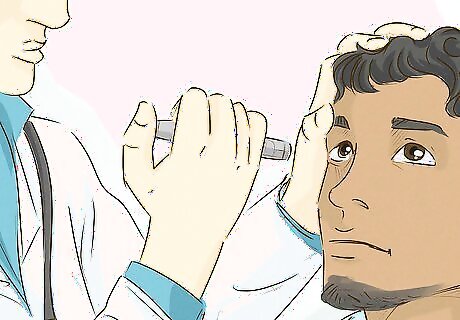
Have an ophthalmologist assess the severity of your problem. Depending upon whether your issue is related to a few eyelashes or many, your doctor may choose different courses of treatment. Your doctor will perform an eye exam and get a history of your issue to best understand what has been going on.
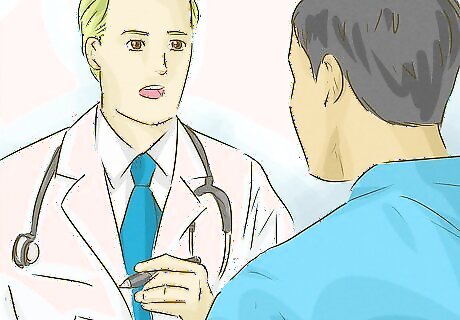
Discuss any anatomical abnormalities. Certain anatomical abnormalities and conditions, such as epiblepharon and entropion, can cause eyelashes that are growing normally to touch the eye. This is less a problem with the eyelashes themselves than with the eyelid. Your ophthalmologist can determine whether your anatomy or your eyelash growth is causing your persistent issue. Anatomical abnormalities can often be resolved through surgery. Your doctor will determine what the proper course of action is for you. If your anatomy is normal and you have multiple lashes growing towards your eye, your ophthalmologist may recommend treatments to have them permanently removed.
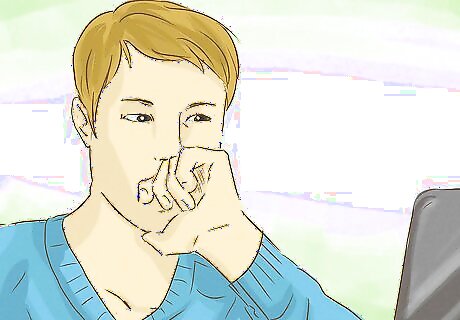
Determine whether electrolysis or cryosurgery is right for you. The two main courses of treatment for chronic eyelash poking are electrolysis, which uses electricity to permanently remove the eyelashes, or cryosurgery, which freezes and removes the problem lashes and their follicles. Both of these treatments are done in an outpatient setting where your eye is numbed, so you will not feel much pain. Each of these procedures has its own risks and benefits. Discuss them with your doctor to determine which makes the most sense for you.
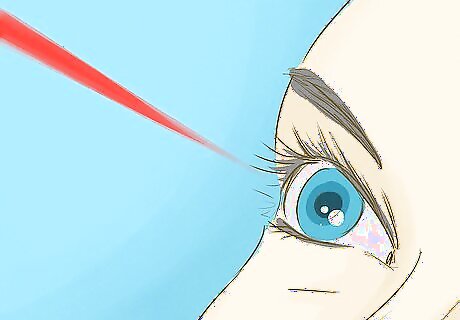
Go in for your procedure. The morning of your procedure, follow any directions the doctor has given you about eye care. Come in rested, if possible. If you feel nervous, take a few deep breaths or listen to your favorite music to relax. The procedures are short, and your problem will be resolved shortly. It can help to bring a friend or family member for support on the day of the procedure if you’d like some reassurance.
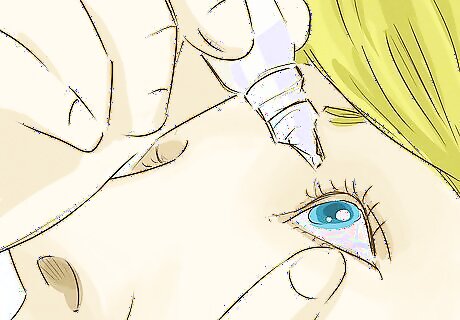
Follow any aftercare instructions from the ophthalmologist. Depending upon your case, you may need to use eye drops or antibiotic cream while your lash follicles heal. Perform aftercare as directed, and schedule any follow up visits so the doctor can track your healing. During healing, call your doctor if you notice any signs of infection, such as redness, yellow or green discharge, skin that is warm to the touch or a fever.



















Comments
0 comment